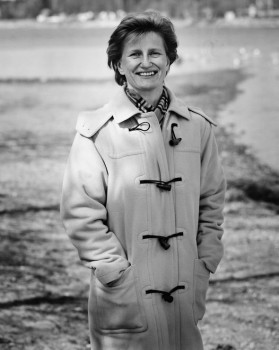Archive for November, 2013
Decisions, decisions: the fate of virtual literature
28 November 2013 | Articles, Non-fiction

Once upon a time: ‘Boyhood of Raleigh’ by J.E. Millais (1871). Wikipedia
In an era of ‘liveblogging’‚ we are all storytellers. But what’s the story, asks Teemu Manninen
One score of years ago, when the internet was new, the cultural critics of the time were fond saying that it would usher in a new utopia of free distribution of information: we would be able to read everything, know everything and share everything anywhere and every day.
Truly, they told us, we would become enriched by the internet to the point of not knowing what to do with all that wealth of knowledge, the amount of connections between us and the ever-increasing online availability of anyone with everyone, every waking hour.
Now that we really do have this always-on connectivity, you will indeed be available every waking hour: you will update your status, check your inbox, post pics and be available for chatting, texting, a quick email and a message or two, just to make sure no one is offended by your unreachability, since – from experience – a week’s worth of not tweeting or facebooking can make someone think that something serious has happened, or that you don’t even exist anymore. More…
Cute or what!
28 November 2013 | This 'n' that

A bear pose: a small bear at the Kuusamo Predator Centre. Photo: Pasi Jäntti
Beardom is a weird, fascinating universe. We admit we have a soft spot for this furry predator, living in Finnish forests, which hibernates during the coldest months and does not eat humans (if it can possibly avoid it).
Take a look at these cuties: the New York Daily News published bear photos by a Finnish photographer on 21 November. This smash hit in bear photography is the series in which Valtteri Mulkahainen, an amateur photographer and teacher living in Sotkamo, north-eastern Finland, managed to capture a bear family in Suomussalmi last summer. Adorable creatures!
These lively triplets seem to be playing a round game while their mummy keeps on eating nearby. We hope they will live happily ever after, and that they found a good home for their winter sleep.
The estimate of the number of brown bears in the country is around 1,300. One hundred and thirty two shooting licences were issued this year. Bears in winter hibernation are strictly protected from hunting.
More bears, from the Kuusamo Predator Centre, also north-eastern Finland, on our page (and more of Valtteri Mulkahainen’s photos can be viewed on 500px.com)!
Mutts and mongrels of architecture
28 November 2013 | This 'n' that
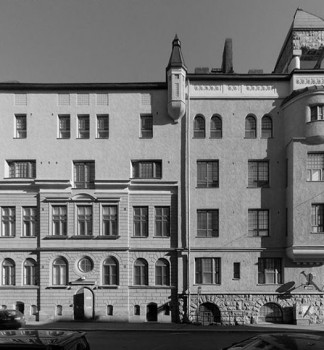
Uudenmaankatu Street 42: a mixture of architecture from 1865–66 and 1905–07
Low-rise wooden buildings in the late 19th-century small town of Helsinki began to disappear as they were beginning to be replaced by houses built of stone. Last century wars and economic interests further changed the façades of Helsinki.
The oldest buildings may contain several generations of constructions, clearly visible or more discreet. In the past houses have been treated in a way which is no longer acceptable.
They were altered in various ways – made taller, smaller or stripped of original ornaments, often after damage in various wars, when restoration would have proved too expensive. In the end, they have become mutts and mongrels of architecture.

Upwards: an extra floor was added to the middle section of this apartment house (1910–11) in 1926.
Architect Juha Ilonen has wandered around Helsinki with his camera, capturing views that often take a Helsinki citizen by surprise.
In his new, capacious book Kolmas Helsinki – kerroksia arjen arkkitehtuurissa (‘The third Helsinki – layers in the architecture of the everyday’) Ilonen features ca. 300 buildings, from the mid-18th century to 2010. Most of them are apartment buildings situated in downtown Helsinki.
Why is it that I’ve never paid any attention to this or that extraordinary building, even though I hurry past it almost every day? Simply because I often don’t lift my gaze up from street level. The buildings speak volumes about history, aesthetics and demands of practicality.
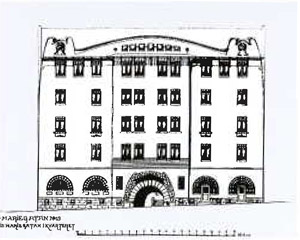
Mariankatu Street 19: original architecture by Gustaf Estlander, 1904–05
But take a look at this house in Kruununhaka in the heart of the city – Books from Finland resided in the back yard building for years, and we had absolutely no idea that the façade had been thoroughly altered and stripped of its beautiful Jugend ornaments…
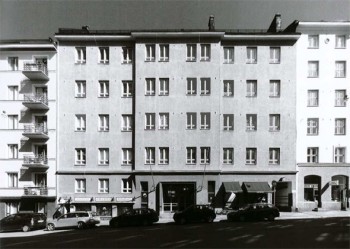
Mariankatu Street 19: new version, by Ole Gripenberg, 1936
Ilonen’s book is a treasure trove for anybody interested in architecture, housing or city life – or photography: hundreds of black-and-white photographs feature delightful samples of the variety and quality of Helsinki architecture.
Juha Ilonen
Kolmas Helsinki – kerroksia arjen arkkitehtuurissa
The third Helsinki – layers in the architecture of the everyday]
Helsinki: AtlasArt, 2013. 304 pp., ill.
ISBN 978-952-5671-51-3
€55, hardback
Asko Sahlberg: Herodes [Herod]
28 November 2013 | Mini reviews, Reviews
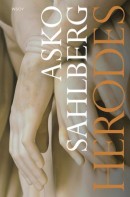 Herodes
Herodes
[Herod]
Helsinki: WSOY, 2013. 680 pp.
ISBN 978-951-0-39546-2
€40, hardback
Sahlberg’s short, concise novels about Finland’s recent past are here followed by a massive volume set in the early days of Christianity, in Judea and Galilee. Sahlberg’s accurate use of language, his pithy dialogue and vivid sense of history guarantee a reading experience. John the Baptist is the novel’s great prophet; the short, bow-legged Jeshua remains in his shadow. The main character, however, is Herod Antipas, the Roman tetrarch, and Herod’s wife and his servant are also central. Representing the imperial power in the Judea area is the prefect Pontius Pilate. Herod is a sympathetic character who has, throughout his life, alternately enjoyed and suffered from the use of power. How does power change a man? What is the meaning of trust and loyalty – not to mention love – when life is full of fear, doubt and extortion, poisoners and agitators? Sahlberg (born 1964) also opens up perspectives on the examination of our own time. The novel was on the Finlandia Prize shortlist.
Translated by Hildi Hawkins
The Finlandia prizes: Non-fiction, Junior
28 November 2013 | In the news

Ville Kivimäki. Photo: Pertti Nisonen
The Finlandia Prize for Non-Fiction 2013, worth €30,000, was awarded on 21 November to the historian Ville Kivimäki for his book Murtuneet mielet. Taistelu suomalaissotilaiden hermoista 1939–1945 (‘Broken minds. The battle ofor the nerves of Finnish soldiers 1939–1945’, WSOY).
The other works on the shortlist of six were as follows: 940 päivää isäni muistina (‘940 days as my father’s memory’, Teos; a book on Alzheimer’s disease) by Hanna Jensen, Kokottien kultakausi: Belle Epoquen mediatähdet modernin naiseuden kuvastimina (‘The golden era of the cocottes: the media stars of Belle Epoque as mirrors of modern femininity’, Finnish Literature Society) by Harri Kalha, Viipuri 1918 (‘Vyborg 1918’, Siltala) by Teemu Keskisarja, Suomi öljyn jälkeen (‘Post-oil Finland’, Into) by Rauli Partanen, Harri Paloheimo and Heikki Waris and Vapaalasku – tieto, taito, turvallisuus (‘Freestyle – knowledge, skill, safety’, Kustannus Oy Vapaalasku) by Matti Verkasalo, Jarkko-Juhani Henttonen and Kai Arponen.
The prize-winner was chosen by the director of the Ateneum Art Museum, Maija Tanninen–Mattila. In her celebratory speech she said: ‘The symptoms of many psychologically disturbed soldiers remained untreated during the war. For many, their symptoms appeared only after the war. Their experiences have remained unexpressed in language, the history of those who lack history. Ville Kivimäki has given voice to these experiences… and succeeded in writing a book that speaks across the generations.’
In his acceptance speech Ville Kivimäki (born 1976) commented: ‘The great majority of the war generation is now dead, and the words of a youngish scholar cannot, even when successful, reach those traumatic experiences whose depth we can never fully understand. But all the same, I would like to take this opportunity to say something that should have been said years ago: the psychological injuries of the war were war wounds in exactly the same sense as physical ones. In the end anyone could suffer a psychological breakdown.’

Kreetta Onkeli. Photo: Jouni Harala
The Finlandia Junior Prize 2013 was awarded on 26 November, also worth €30,000. It went to Kreetta Onkeli for her book Poika joka menetti muistinsa (‘The boy who lost his memory’, Otava).
Arto, 12, gets such a massive fit of laughter that he loses his memory and needs to find his identity and his home in contemporary Helsinki.
The winner was chosen from the shortlist of six by Jarno Leppälä, a media personality and member of the popular stunt group Duudsonit, the Dudesons. At the award ceremony he said:
‘Poika joka menetti muistinsa is, in my opinion, a well-written story about how young people in society are put on the same starting line and expected to do equally well in all circumstances – often irrespective of the fact that their starting points may actually be very different, and completely independent of the young people themselves.’
Kreetta Onkeli (born 1970) explained in her award speech how her aim was to write a proper, old-fashioned novel for children: ‘Not hundreds of pages of magic tricks but ordinary, real contemporary life that children could identify with.’ In her opinion the current, massive trend of fantasy has narrowed the scope of children’s literature.
The following five books made it on to the shortlist: Poika (‘The boy’, Like), about a boy who feels he was born in the wrong gender by Marja Björk, Hipinäaasi, apinahiisi (onomatopoetic pun, ‘Donkeymonkey’, Tammi), about bullying and friendship, written by Ville Hytönen and illustrated by Matti Pikkujämsä, Isä vaihtaa vapaalle (‘Father on his own time’, WSOY), an illustrated story about children with too busy parents, written by Jukka Laajarinne and illustrated by Timo Mänttäri, Aapine (‘ABC’, Otava), an illustrated primer written by Heli Laaksonen in her own south-western dialect and illustrated by Elina Warsta and Vain pahaa unta (‘Just a bad dream’, WSOY) by graphic designer and writer Ville Tietäväinen and his daughter Aino, a book on a child’s nightmares.
Finlandia literary prizes are awarded by Suomen Kirjasäätiö, The Finnish Book Foundation, established in 1983.
The first Finlandia Prize for Fiction was awarded in 1984. This year it will be announced on 3 December.
Ecstasy rewarded
28 November 2013 | In the news

Erkka Filander. Photo: Virpi Alanen
On 14 November Helsingin Sanomat Literature Prize, the Helsinki newspaper’s prize for the best first work of the year, worth €15,000, was awarded for the 19th time.
The jury made its choice from 90 first works, and this time the prize was awarded to a youngest writer ever, the poet Erkka Filander (born 1993), for his collection Heräämisen valkea myrsky (‘The white storm of awakening’; available as a pdf at the home page of the publisher, Poesia).
According to the jury, this poetry is ‘ecstatic poetry, pulsing with the joy of living… there is no place in Filander’s poetry for cynicism or irony. Thus his writing appears, in the context of contemporary poetry, exceptionally open and sincere.’
Ville Kivimäki: Murtuneet mielet. Taistelu suomalaissotilaiden hermoista 1939–1945 [Broken minds. The battle for the nerves of the Finnish soldiers 1939–1945]
28 November 2013 | Mini reviews, Reviews
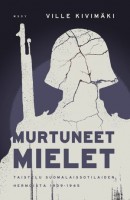 Murtuneet mielet. Taistelu suomalaissotilaiden hermoista 1939–1945
Murtuneet mielet. Taistelu suomalaissotilaiden hermoista 1939–1945
[Broken minds. The battle for the nerves of the Finnish soldiers 1939–1945]
Helsinki: WSOY, 2013. 475 pp., ill.
ISBN 978-951-0-37466-5
€37, paperback
Ville Kivimäki bases this work on his dissertation. His research concentrates on how mentally wounded soldiers of the Winter War and the Continuation war (1939–1945), were treated and what sort of conclusions can be made as regards to their age and social background. Eighteen thousand men received, or were forced to undergo, psychiatric treatment; no doubt the number of those who remained untreated and those who suffered symptoms after the war was large. Cases increased not just during combat but also during the long periods of trench warfare. Mental problems were considered shameful, and often even the psychiatrists had moralising attitudes. Those who became ill were regarded as physically and mentally weaker material, trying to benefit from their illness. Treatment relied on German methods, mainly appropriate, even though unappropriate examples exist. The goal was to return the patient to the front, to useful work or home. Kivimäki also takes a look at those who did not fall sick and describes the community of the soldiers at the front and their ways of coping. Remains of wartime attitudes were, surprisingly, seen in doctor’s views as late as the 1990s, when remunerations were discussed. The book won the Finlandia Prize for Non-fiction in 2013.
Yikes! How good are Finnish schools now?
28 November 2013 | This 'n' that
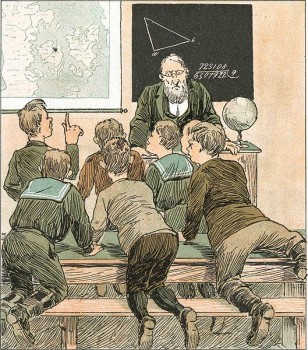
Questions and answers. Illustration, from a Danish magazine, 1890: Wikimedia
The new PISA results were published in December: these tests, conducted by the Organisation for Economic Co-operation and Development (OECD), measure the level of education of 15-year-old schoolchildren every three years.
Finland has done pretty well in recent years, so there has been interest in other countries in finding out what it is that makes Finnish schools better places for learning.
In 2000 Finnish pupils had been best at reading, and second at maths in 2003 – although competition has grown due to a larger number of countries, particularly in Asia – taking part in the study: for example, only 32 in 2000, but 65 in 2009 and in 2012.
In 2009 Finnish kids were third best in reading and sixth in maths. Now PISA 2012 results place Finnish kids in 12th place in maths, which created a stir in various educational circles. The best five were all Asian countries.
On the index list measuring skills at maths, science and literacy together, Shanghai leads, then come Singapore and Hong Kong. Finland is the best European country, number 7; Estonia is 8, Germany 16, Great Britain 21, the US 29, Sweden 38.
Non scholae, sed vitae discimus. Competition permeates everything now more than ever, but we do not learn for school but for life – not for PISA either. Still, teaching methods and students’ motivation are clearly worth improving.
The chances of learning on this globe are greater and more accessible than ever, but learning still takes brains, motivation and time. Yikes!
Tales of the night
22 November 2013 | Comics, Fiction
 The father is woken up in the middle of the night because his small daughter suffers from nightmares. He asks her to tell him about them so they won’t frighten her any longer. Giant bunnies wearing high heels chase little Aino, a scary three-eyed gnome pours apple jam onto her, Daddy has turned into a dog….
The father is woken up in the middle of the night because his small daughter suffers from nightmares. He asks her to tell him about them so they won’t frighten her any longer. Giant bunnies wearing high heels chase little Aino, a scary three-eyed gnome pours apple jam onto her, Daddy has turned into a dog….
Graphic artist Ville Tietäväinen began writing down Aino’s dreams when she was three, and together they illustrated them. The result is a graphic storybook entitled Vain pahaa unta (‘Just a bad dream’, WSOY, 2013).
Visible in the background are selected quotations from books on dreams and nightmares.. Aino’s nightmares are certainly produced by a lively imagination, making this an excitingly quirky book.
It was selected as one of the six runners-up of the Finlandia Junior Prize 2013; the winner will be announced on 26 November. (We tend to think, though, that Vain pahaa unta is definitely a more interesting read for daddies than kiddies.)
Anna-Lena Laurén: Frihetens pris är okänt. Om demokratiska revolutioner i Georgien, Ukraina och Kirgizistan [The price of freedom is unknown: On democratic revolutions in Georgia, Ukraine and Kyrgyzstan]
22 November 2013 | Mini reviews, Reviews
 Frihetens pris är okänt. Om demokratiska revolutioner i Georgien, Ukraina och Kirgizistan
Frihetens pris är okänt. Om demokratiska revolutioner i Georgien, Ukraina och Kirgizistan
[The price of freedom is unknown: On democratic revolutions in Georgia, Ukraine and Kyrgyzstan]
Helsinki: Schildts & Söderströms, 2013. 212 pp., ill.
ISBN 978-951-523-227-4
€25, paperback
Finnish edition:
Kuinka kallis vapaus – värivallankumouksista Georgiassa, Ukrainassa ja Kirgisiassa
Suomentanut [Translated into Finnish by] Liisa Ryömä
Helsinki: Teos, 2013. 219 pp., ill.
ISBN 978-951-851-473-5
€28.40, paperback
Anna-Lena Laurén (born 1976) is an award-winning Finland-Swedish journalist, author and Moscow-based foreign correspondent. In this volume of reportage, she investigates three post-Soviet states after their ‘democratic revolutions’, which took place between 2003 and 2005. Georgia, Ukraine and Kyrgyzstan differ from one another in many respects. Georgia has made the most progress along the road to democracy, but even it remains an authoritarian state. Ukraine is plagued by corruption; impoverished Kyrgyzstan – culturally and linguistically divided, like Ukraine – is relatively free, but corruption is rife. For good or ill, these countries are overshadowed by their former ruling power, the present-day nation of Russia. Anna-Lena Laurén has listened with a keen ear to politicians, intellectuals, farmers and workers, as well as members of minority groups. She is well-versed in the history and current situation of these countries and portrays people’s everyday lives with empathy while spotting the green shoots of democracy in among the difficulties.
Translated by Ruth Urbom
When I’m ninety-four
14 November 2013 | Fiction, Prose
An extract from the novel Kuolema Ehtoolehdossa (‘Death in Twilight Grove’, Teos, 2013). Minna Lindgren interviewed by Anna-Leena Ekroos
At the Health Clinic, Siiri Kettunen once more found a new ‘personal physician’ waiting for her. The doctor was so young that Siiri had to ask whether a little girl like her could be a real doctor at all, but that was a mistake. By the time she remembered that there had been a series of articles in the paper about fake doctors, the girl doctor had already taken offence.
‘Shall we get down to business?’ the unknown personal physician said, after a brief lecture. She told Siiri to take off her blouse, then listened to her lungs with an ice-cold stethoscope that almost stopped her heart, and wrote a referral to Meilahti hospital for urgent tests. Apparently the stethoscope was the gizmo that gave the doctor the same kind of certainty that the blood pressure cuff had given the nurse.
‘I can order an ambulance,’ the doctor said, but that was a bit much, in Siiri’s opinion, so she thanked her politely for listening to her lungs and promised to catch the very next tram to the heart exam. More…
Finlandia Prize for Fiction 2013
14 November 2013 | In the news
One of the following six novels will be awarded this year’s Finlandia Prize for Fiction, worth 30,000 euros: Ystäväni Rasputin (’My friend Rasputin’) by JP Koskinen, Hotel Sapiens (Teos) by Leena Krohn, Jokapäiväinen elämämme (‘Our everyday life’, Teos) by Riikka Pelo, Terminaali (‘The terminal’, Siltala) by Hannu Raittila, Herodes (‘Herod’, WSOY) by Asko Sahlberg and Hägring 38 (‘Mirage 38’, Schildts & Söderströms; Finnish translation, Kangastus, Otava) by Kjell Westö.
Half of the writers have already won the Finlandia Prize once, namely Krohn (1992), Raittila (2001) and Westö (2006).
Four of the six works deal with a historical character or history: Koskinen with the Russian ‘holy man’ Rasputin, Pelo with the Russian poet Marina Tsvetaeva, Sahlberg with Herod the Great of Judea. Westö goes back to the year 1938 in Finland.
Raittila’s realistic novel takes place on contemporary airports. Krohn, again taking a look at an unknown future, presents the reader with a imaginary Earth which no longer is habitable to humans.
The runners-up were chosen by a jury – appointed by the Finnish Book Publishers’ Association – of three: the journalists Nina Paavolainen and Raisa Rauhamaa and the translator Juhani Lindholm. The winner of the 30th Finlandia Prize for Fiction will chosen by theatre manager of the Helsinki City Theatre and actor Asko Sarkola, and announced on 3 December.
Aapo Roselius: Isänmaallinen kevät. Vapaussotamyytin alkulähteillä [Springtime for the Fatherland. The origins of the freedom war myth]
14 November 2013 | Mini reviews, Reviews
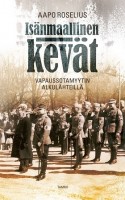 Isänmaallinen kevät. Vapaussotamyytin alkulähteillä
Isänmaallinen kevät. Vapaussotamyytin alkulähteillä
[Springtime for the Fatherland. The origins of the freedom war myth]
Helsinki: Tammi, 2013. 285 pp., ill.
ISBN 978-951-31-5821-7
€42.40, paperback
Having gained its independence from Russia in 1917, Finland descended into civil war in 1918, with the ‘Whites’ on the side of the Finnish Senate fighting against the ‘Reds’, who were aligned with the labour movement. The Whites, who emerged as victors, also termed this conflict the ‘Freedom War’. This book is based partly on Aapo Roselius’ doctoral thesis. He investigates how people after the war sought to create the foundation for an idealised view which held that the war, as the result of lengthy historical developments, secured Finland’s freedom and independence. Roselius also employs some literary techniques to show how the Whites’ victory was commemorated in celebrations, collections of reminiscences and monuments. The key remembrance organisation was the paramilitary Civil Guard, whose members had fought in the war. The losing opposition side was regarded as a threat, and there was a widespread desire to forget the more numerous casualties among the Reds and those who died in prison camps. When the Winter War broke out against the Soviet Union in 1939, men from the Left also went to war; the image of a nation defending the fatherland suppressed the myth that love of one’s homeland was the sole prerogative of the winners of the Finnish Civil War.
Translated by Ruth Urbom
Truth or hype: good books or bad reviews?
8 November 2013 | Letter from the Editors

‘The Bibliophile’s Desk’: L. Block (1848–1901). Wikipedia
More and more new Finnish fiction is seeing the light of day. Does quantity equal quality?
Fewer and fewer critical evaluations of those fiction books are published in the traditional print media. Is criticism needed any more?
At the Helsinki Book Fair in late October the latest issue of the weekly magazine Suomen Kuvalehti was removed from the stand of its publisher, Otavamedia, by the chief executive officer of Otava Publishing Company Ltd. Both belong to the same Otava Group.
The cover featured a drawing of a book in the form of a toilet roll, referring to an article entitled ‘The ailing novel’, by Riitta Kylänpää, in which new Finnish fiction and literary life were discussed, with a critical tone at places. CEO Pasi Vainio said he made the decision out of respect for the work of Finnish authors.
His action was consequently assessed by the author Elina Hirvonen who, in her column in the Helsingin Sanomat newspaper, criticised the decision. ‘The attempt to conceal the article was incomprehensible. Authors are not children. The Finnish novel is not doing so badly that it collapses if somebody criticises it. Even a rambling reflection is better for literature than the same old articles about the same old writers’ personal lives.’ More…

